Knowing how to write from an SEO perspective is essential in marketing, as even a single word, space, or comma can make a difference in being found by customers on the web. The technique of copywriting needs to be studied and planned in order to achieve goals. The best method for writing is SEO copywriting, which is used to improve organic positioning in search engine results pages (SERPs).
This is because it is necessary to adhere to the strict indexing rules of search engines, which, if followed, can ensure excellent positions. In this article, we will explore these rules, which can make content appealing to the search engines on which they appear.
SEO copywriting: what is SEO?
Before understanding how to create website content and therefore understand how to do SEO writing, let's talk a bit about SEO itself.
Search Engine Optimization is a technique used, as mentioned earlier, to achieve the top organic position in SERPs. The term "SERP" refers to the Search Engine Results Page, which is the page presented to the user after performing a search.
SEO follows specific rules. In this way, through complex algorithms, it can offer the best content in terms of quality and coherence, based on the user's search. All these rules also refer to UX, which includes all the graphic elements and usability factors that facilitate consumer searches. The better the UX according to the search engine crawlers, the better the position obtained.
Crawlers are bots tasked with periodically analyzing the content of pages on all websites. By doing so, the search engine stays updated on the content, being able to consistently propose what it deems as updated and reliable based on its algorithms.

The logic of SEO indexing
Continuing the article on copywriting for SEO, let's describe how the bot crawlers determine the best result to present to the user conducting the search.
-
Freshness: Search engines pay close attention to the frequency of website updates. This is because information will be perceived as current, potentially more interesting and useful.
-
Number of pages: The more content-rich a website is, the more information the user can find.
-
Speed: Users should obtain what they are looking for as quickly as possible. A slow website is likely to be discarded in favor of a faster one by both users and bots.
-
Available information: Bots analyze files within the website, such as sitemaps and robots.txt, which allow for a more comprehensive evaluation of site indexing information.
The importance of keywords in SEO
Keywords are the key words that users use to conduct a web search. To be found in search results, it is important to identify these keywords and incorporate them into your text. This way, algorithms recognize the written article as a text that could satisfy the user's search and include it among the various results.
Keywords can be identified through various specific tools. Each keyword has a set of parameters, such as:
-
Search volume: the number of people searching for that keyword.
-
Difficulty in ranking one's article, which is related to how commonly that keyword is used.
-
Cost for paid campaigns, among other parameters.
Keywords can be short-tail or long-tail. Short-tail keywords consist of a few words, have more traffic, but it is also more difficult to rank for them. Long-tail keywords, on the other hand, consist of three or more words, are more specific, less searched for, but easier to rank well with.
The chosen keyword for your article should be present in several parts of the text, such as the title, body, and meta description.
How to do SEO copywriting
To do SEO copywriting, it is also necessary to consider the reading mode of users on the web, which can be defined as "chaotic." There are different techniques and tools for writing, which we will see shortly. Before moving on to these, it is important to pay attention to the rules to follow for writing in the best SEO perspective:
-
Adapt the language to your target audience: It is important to ensure that you speak the same language as your readers. Some audiences are more accustomed to technical language, while others prefer a more informal language, with many nuances between the two poles. Therefore, it is necessary to adapt the tone of voice to your audience in order to make the reading enjoyable and suitable.
-
Streamline the structure: To write in an SEO perspective, sentences should be short and simple. A sentence that is too long and complex, or an article filled with passive forms, can confuse the reader or, worse, bore them.
-
Pay attention to acronyms: Acronyms and abbreviations are not prohibited, but it is important to ensure that the target audience of the content can easily understand them.
-
Insert related links in the text: both from your own site and from external sources so that the user can further enrich their navigation.
-
Always cite sources: Search engines tend to penalize texts that do not cite their sources, especially those on medical or financial sites.
-
Use bullet points and create an index: This way, the user will more easily understand the elements and structure of the text.
-
Divide into paragraphs: The "layer cake" writing technique is perfect for making the reading experience lighter.
-
Pay attention to grammar: It is always advisable to do so, not only for SERP rankings but also to avoid embarrassing mistakes.
-
Include multimedia elements: This refers, for example, to photos and videos. They are excellent for making the reading experience more engaging and supportive.
How NOT to do SEO copywriting
In order to achieve the best possible ranking with SEO copywriting, there are some elements to avoid or eliminate.
One should avoid "keyword stuffing", which means filling the text with poorly distributed and non-contextualized keywords. Otherwise, the text is perceived as potentially boring and heavy to read, just like an excessively long text. In fact, the text should be appropriate to the topic covered, including its length.
Creating original content is extremely important. Gathering information from other websites and sources is absolutely legitimate, as long as the created text is an elaboration of the acquired information. Otherwise, search engines will penalize copied content, resulting in lower rankings.
The last element to consider when creating a text is the CTA, or "call to action". It should be clear and visible so that the user can immediately see and understand the action they need to take.
Tools and techniques for writing
Now that we know how search engine indexing works and have the main rules of SEO copywriting, let's discover some tools.
The best tool to find topics to write about on your website is none other than the search engine itself. When you enter words in the search bar, the search engine suggests related searches, the most common ones related to ours. The search engine provides us with the information that users need.
Another useful tool for finding what to write about is "Answer The Public". Partially free, it allows you to know the related searches for a specific topic and similar ones. This way, you can understand the preferences, intentions, and needs of online consumers.
Speaking of strategies, we mentioned earlier the layer cake writing strategy, where the text is divided into different paragraphs. Another strategy is the funnel approach: starting with a general introduction, gradually becoming more specific and technical, as the attention has already been captured in the beginning.
These are just a few tools and techniques that can be employed in creating an optimized text for search engine indexing on your website.
At Ekeria, a digital agency, we are experts in SEO indexing logic. Trust us to achieve greater visibility on the web by leveraging article writing and search engines. Contact us for a free consultation!







